In some Latin American drug cartels, women are the violent new overlords
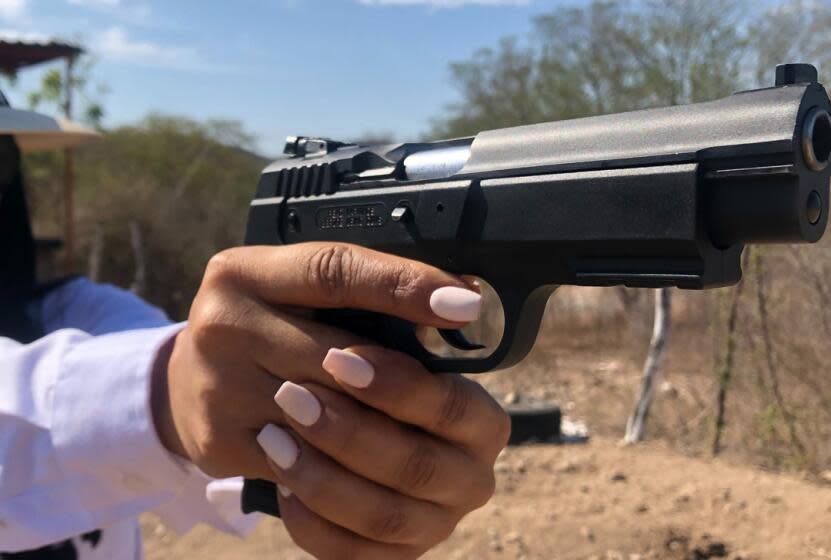
- Oops!Something went wrong.Please try again later.
- Oops!Something went wrong.Please try again later.
Standing alone at the front of a Chicago courtroom, Guadalupe Fernández Valencia wore orange prison coveralls. Her long light brown hair, streaked with gray, was pulled back into a tight ponytail at the nape of her neck. She wore no makeup. She was 60 years old.
“I want to take advantage of this opportunity to ask forgiveness from my children and from my family,” said Guadalupe. It was August 2021, and she was about to be sentenced for a sobering litany of drug trafficking charges, including conspiracy to transport and distribute, and money laundering.
Guadalupe spent more than three decades in the drug business, working for Joaquín "El Chapo" Guzmán, the world’s most famous drug lord, and his Sinaloa cartel. She is, to date, the highest-ranking female Sinaloa cartel operative to emerge into the public eye, and one of the little-known yet powerful women that I investigated for my book, "Narcas: The Secret Rise of Women in Latin America's Cartels."
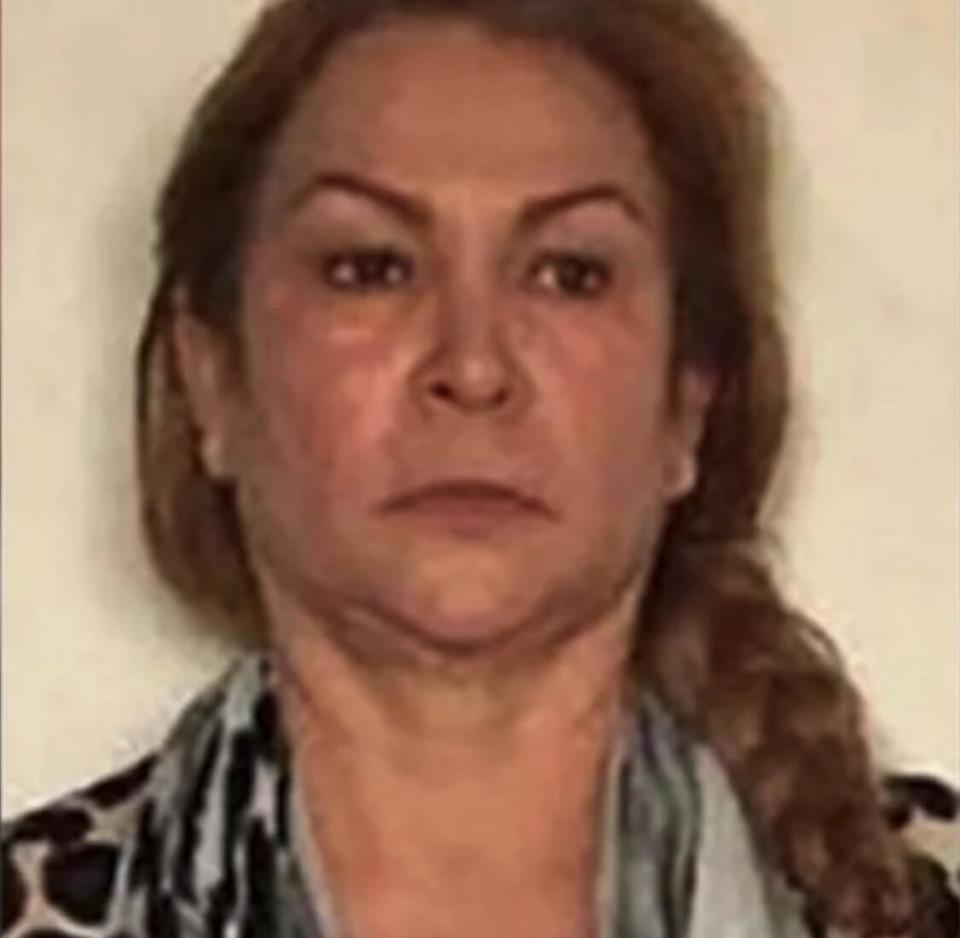
When El Chapo was convicted by a court in New York, in February 2019, it was the climax of the highest-profile organized crime case of my generation. During his trial, news reporters had to arrive at 3 or 4 in the morning to get a seat for the day. El Chapo’s adventures — and those of other male traffickers — have inspired Hollywood movies, Netflix series and countless books and novels. Few women have.
So when I looked at the indictment that sent El Chapo down, an indictment on which Guadalupe was the only woman, I was struck by how unknown her story is to the world. Some superficial Googling revealed coverage of the guilty plea she made and not much else. In the history of the drug trade, public focus is nearly always on the male protagonists.
Yet Guadalupe, known as “La Patrona” (a Spanish term for a female boss), had a criminal career that ran parallel to that of El Chapo. She was arrested in Mexico just a month after his final capture.
I wondered, as she awaited her sentence in the dock, if she had calmed herself by picturing the green mountains and remembering the soft air of home. The smell of wood smoke in the mornings. Did memories of Michoacán, the humid southern Mexican state where she was born, soothe her in that difficult moment?
Any happy childhood memories had no doubt been sullied when the crime lords moved into her home state when she was a teenager. They plundered the heroin poppy and marijuana plantations in the picturesque mountains, holding humble farmers to ransom by controlling the price for poppy paste that the farmers had no choice but to accept. Those who spoke up in self-defense were either silenced or co-opted.
Eventually, the drug gangs took over entire villages like hers, often abusing the communities’ younger women. They would grow to dominate not just the lucrative production of heroin and crystal meth, but the mineral and gold mines dotted around the state, as well as the avocado and lime industries.
Guadalupe escaped them for a time by coming to the United States, like millions of her countrymen and women before her. But now here she was — one of them. The bosses she had worked for fronted a billion-dollar multinational operation that had tentacles reaching around the globe. They didn’t just dominate a single Mexican state. They were the biggest criminal organization in the world.
“I wish I could find the words to convince you of how sorry I am,” Guadalupe told Judge Sharon Johnson Coleman in court in Chicago. She was handed down a 10-year sentence, seven years of which she had already served.
But El Chapo got life. Some of the “substantial” evidence, according to U.S. prosecutors, that eventually put him behind bars after a criminal career spanning more than four decades, came from Guadalupe.
During her time working with the Sinaloa cartel, Guadalupe worked closely with Jesús Alfredo Guzmán Salazar, known as Alfredillo, one of El Chapo’s sons. His name is on the same charge sheet as both Guadalupe’s and his father’s, but he remains at large in Mexico. Court documents describe Guadalupe as Jesús’ “lieutenant.” They worked together on the entire drug distribution process, from start to finish, and she was a fundamental part of the organization, prosecutors say.
Her crucial role in the cartel makes it even more interesting that she is so unknown. When I, a dedicated narco nerd, first learned about her, my curiosity was piqued.
Read more: A Riverside County deputy arrested on drug charges is accused of working for a Mexican cartel
By then, I had been reporting from Latin America for more than a decade, with a focus on organized crime. I’d worked for both mainstream media and nonprofits focused on organized crime, writing about everything from the drug trade to extortion and Central America’s street gangs. I was part of a growing group of women who are documenting the drug trade, its dynamics and its protagonists. A lot of the coverage of narco issues in general has been dominated by male writers and macho narratives. The way these stories have been told — men as victimizers and women as victims — feels excessively based on gender tropes.
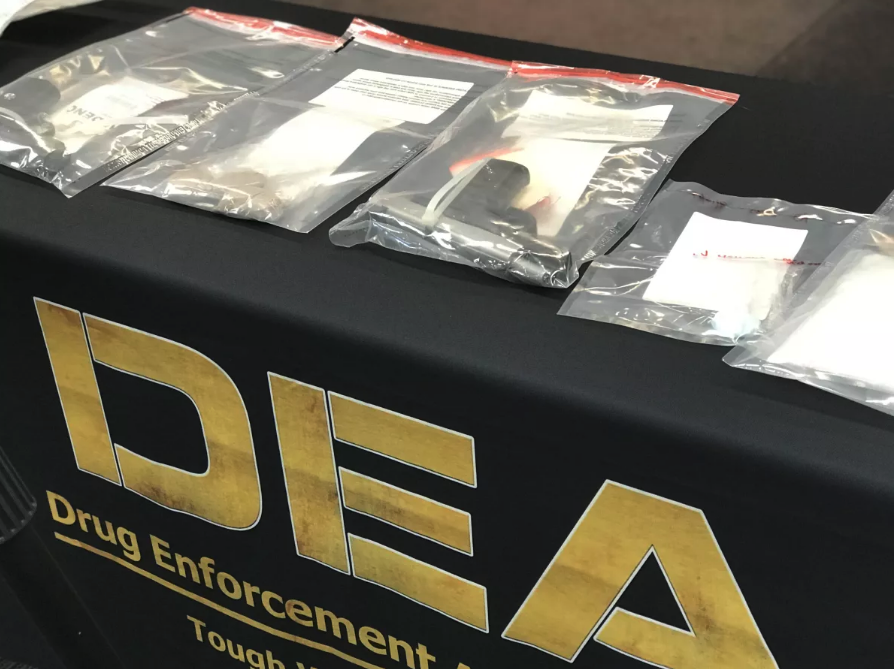
When Guadalupe Fernández Valencia’s story inspired the idea for my book, I had a hunch that this way of viewing the trade was so one-dimensional that it was untrue, but I knew that I had to dig deeper to prove it. I wasn’t interested in finding female versions of the male cabrones (hard macho bastards) that we constantly see in media representations of the cartels. Rather, I wanted to understand how women’s power manifests in this context beyond its juxtaposition with men’s.
On a visit to the Mob Museum in Las Vegas to give a talk on the investigative work for my book in June 2022, I stood in front of a wall adorned with the faces of the “100 Years of Made Men and Their Associates.” There must have been a hundred men and just four women hanging on that wall. It was a stunning reminder of how broadly invisible female faces have been in organized crime over the years.
Now seems the right time to talk about the real, gritty, unexpected part women play in organized crime. Characters such as Wendy Byrde, Ruth Langmore and Darlene Snell in the Netflix series "Ozark," and Polly Gray in "Peaky Blinders" are changing the narratives about women working in criminal businesses, adding nuance and color that contradict clichés. Kate del Castillo continues to portray drug-trafficker Teresa Mendoza in the "La Reina Del Sur" series.
Read more: She met 'El Chapo'. Now, Kate del Castillo is afraid to return to Mexico
All of these dynamics feel connected to what I’ve discovered about women in the ranks of organized crime. Most of the women who have been visible in the drug trade are highly sexualized narco wives or girlfriends. The little coverage they have received tends to focus on their sexual attractiveness and attachments to male narcos, rather than their business power, the message being that if they’re not attractive, they don’t warrant investigation or attention.
Emma Coronel Aispuro, Guzmán’s much younger, infinitely more glamorous wife, epitomizes this dynamic. She was a constant presence at her husband’s trial and also appeared on VH1’s "Cartel Crew," where she chatted with the family members of other drug traffickers over glasses of Champagne about how to create a brand from her husband’s criminal legacy. She was eventually taken into custody on a visit to Washington, D.C., in early 2021.
Prosecutors alleged that she was part of a plan to break her husband out of prison for a third time before he was extradited to the United States to face trial. They also claimed that she knew about his drug trafficking activities and the origin of the proceeds. She was an enabler, the classic gangster’s moll. Emma eventually turned herself in and was given a relatively light sentence despite her alleged offenses.
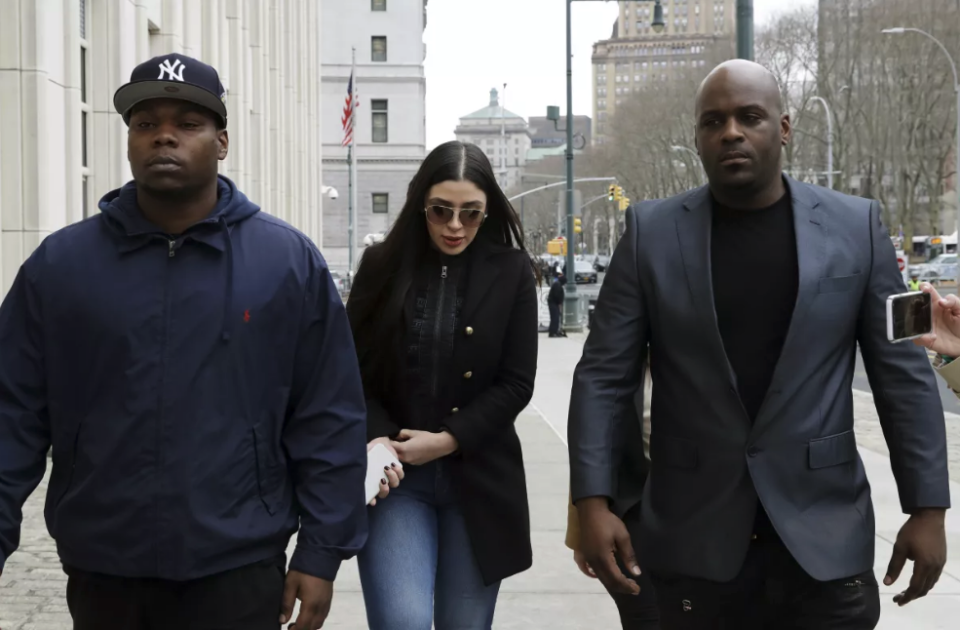
The romantic or family attachments of women in the drug trade are often used to minimize or marginalize them as protagonists. Emma’s role as El Chapo’s wife is a great example. The logic seems to be that women are there because they are someone’s wife or lover or sister or daughter. But men also enter the trade by virtue of their family connections — most organized crime business is also family business — and yet their influence is assumed to be larger or more important, a virtue of their maleness rather than their familial connections. Those blood or love ties are never used to explain and minimize their presence in the way they are for women.
Then there are the other women most visible in organized crime: the victims. Impoverished single mothers obliged to sell or smuggle drugs to support their families, or women coerced to entrap and kill. Women trafficked into undesirable trades. Prisons across the region are home to thousands of women like this, who are serving long sentences for relatively small crimes.
But within the binary of characterizing narco women as either wives or victims, I started to see so much more. I saw women as protagonists and decision-makers in the criminal underworld and the drug trade. I saw them in roles in which their romantic or family connections were a sidebar. Women like Guadalupe and the other protagonists in my book. Women in gangs in Central America. Women operating extortion rackets. Women involved in narcomenudeo (street-level drug crime). Across Latin America, the female population behind bars for offenses related to organized crime has doubled in the last decade. In Mexico and Colombia — major drug trade hubs in the region — the increase in female prisoners has been especially high.
I began to wonder if women were somehow becoming more empowered in the shadows of the drug trade, even within a regional culture that does its best to hold them down. Maybe some of them see a chance to rise through a hierarchy, despite the murky morality of the drug business. Maybe women in organized crime are rising up to give orders instead of just taking them. I also wondered if the trends I was seeing were new — or if media coverage of the drug trade has just been unable, or unwilling, to see them.
Read more: 'A well-oiled machine': The Mexican Mafia's money-making operation in L.A. County jails
The context of women’s involvement in the Latin American drug trade has been changing, in pace with the growing participation of women in economic and social life. Some women see an opportunity to participate in criminal activities as a way to a potential career, the promise of money, power, influence and status. For many women in the region, the obstacles to professional success remain daunting. Some of the women that I profile come from humble, impoverished backgrounds. That they had to break the law to achieve their career goals reflects many things — from their own personality characteristics to their limited array of options for advancement and power in the mainstream professional sphere.
But to view their role as a simple reflection of necessity is to rob women of their agency, reducing them to mere pawns in a man’s game. The patriarchy of the cartels seems very real, but to assume women don’t have a capacity for violence or a thirst for power and status is just another narrow gender stereotype that grossly misunderstands and underestimates women and their role in the social order.
A woman requesting anonymity was serving a 50-year sentence when we met in the Pavón prison in Guatemala City. She told me she enjoyed running a kidnapping ring that eventually landed her behind bars. She assured me that she didn’t have to get involved in the criminal enterprise out of economic need. Her husband was a drug transporter before he was killed, leaving her plenty of money to care for herself and their three children.
“It was curiosity,” she said. “I wanted to know how it felt. I wanted to feel that my life was at risk. I liked the danger.”
When we talked, she was 54 and 20 years into her prison term. She was hoping to get out within the next five years for good behavior.
Some of the women I met while reporting fit the stereotype of women who can be tricked or forced into organized crime by men. But the story of this Pavón prison inmate felt equally striking and real — and like a new narrative. This woman was owning her decision to get into kidnapping — she wasn’t telling herself or anyone else that she had no choice. “I think that most of us here know what we were doing,” she said about the women in prison with her. “I’ve never blamed anyone but myself. I own my bad acts.”
Then there was Maria, whom I met via a mutual friend in the working-class barrio of Tepito in Mexico City. As we spoke, men in a nearby open-air gym lifted weights and showed off their muscles to each other.
Maria told me she began trafficking weapons as a young woman. One day, her mother, the boss of their gunrunning enterprise, was sick and couldn’t make the drive to pick up guns that had been bought in the U.S. and were being smuggled over the border to Mexico. So she sent Maria, who said she has now been selling weapons to the cartels as well as to local residents for the better part of 20 years. She’s grooming her 16-year-old daughter to do the same.
“I loved the adrenaline. I loved looking over my shoulder,” Maria told me about the first time she went to pick up weapons in the northern state of Tamaulipas, across the border from Texas. Her son, she said, wasn’t keen on joining the matriarchal network of gunrunners.
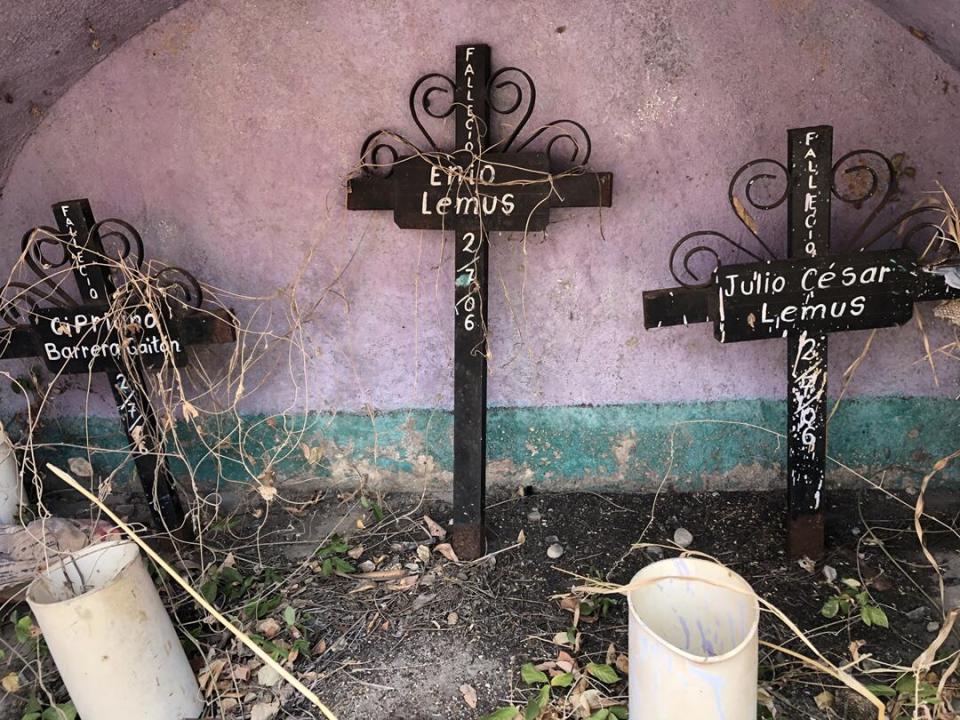
Early on a Sunday in May 2021, Abel Jacobo Miller took me to the outskirts of the city of Culiacán, the capital of Sinaloa, in the already searing sun. He put a Glock pistol in my hand and told me to shoot. As someone who grew up in the U.K., where most guns are illegal for most people, I had never fired a weapon. When I did, my arms and hands trembled under the force of the discharge. But I knew that the more I did it, the better I would get.
The ubiquity of firearms as the weapon of choice in the criminal underworld has contributed to a leveling of the playing field for the sexes. Battles are rarely fought with fists, but with military weaponry and skills that can be mastered equally by all genders. “A [132-pound] woman can’t confront a [198-pound] man with her fists. But with a gun we’re equals,” said Jacobo Miller, who teaches women self-defense and shooting in his home city. He was addressing the other women on the shooting range that day, who seemed able to handle a gun a lot better than I did.
“I work with them to remove the chip that [tells them] they’re vulnerable. That they’re victims,” the father of three daughters told me later. “Women are as threatening as men. They just have to understand that about themselves.”
One of the women under his tutelage that day was 45-year-old accountant Tessa, a lifelong resident of Culiacán. It was the first time she had fired a gun too. “It felt good,” she told me. “At first, I was nervous about what it would feel like in my body, but then it felt good to shoot, and it got easier and easier."
“I wanted to have the confidence to do it,” she said. “With things the way they are, with so much violence, there’s no room for terror. Now, it’s about security and keeping us safe.”
On my reporting trips over the last decade, investigating everything from gang violence and extortion to the fentanyl trade, it has become increasingly common to have women sitting across from me during interviews. And their stories are incredibly nuanced. Women are stepping around the frontiers of gender expectations to establish their own place in organized crime, one of their own making. I learned from U.S. prosecutors who have charged women in the drug trade and from lawyers who have defended them that women often use the shroud of gender stereotypes to go undetected — hiding behind the stereotype of the good girl incapable of doing bad. They become drug transporters, money launderers and killers. Street drug vendors and packers. Weapons traffickers. Kidnappers. Extortionists.
Many of the women I’ve interviewed are also current or former law enforcement officers or elected officials. Both of those types of actors can be fundamental enablers of drug trafficking groups and organized crime across Latin America, even when they may appear to be fighting the illegal narcotics business. They’re involved in a spectrum of ways, from taking bribes for protecting and enabling criminal actors to taxing drug traffickers for operating in their territory. In every single country in Latin America, officials at all levels collude with the drug trade. For the women featured in my book, relationships with powerful officials were a fundamental aspect of their drug trafficking operations and the organizations they work with.
There are some commonalities among the patronas whom I document. Most came into the drug business later in life. Their organizations are often clan-based, involving husbands, children, cousins and other members of the extended family. Many come from poor backgrounds and have little formal education and few legal job opportunities. Some grew up in violent circumstances and were often violent actors themselves. As participants in the drug trade, if they are not doing the killing, they have others to do it for them. And many of them enjoy the power and thrill that the business affords.
Crucially, these women are connected to each other. Some of them have personal relationships, often working together to traffic drugs and move the cash proceeds. Others are linked because of relationships between the organizations they work for. And the more I looked, the more women I found working within the ranks of organized crime. Like men, they are present at all parts of the chain.
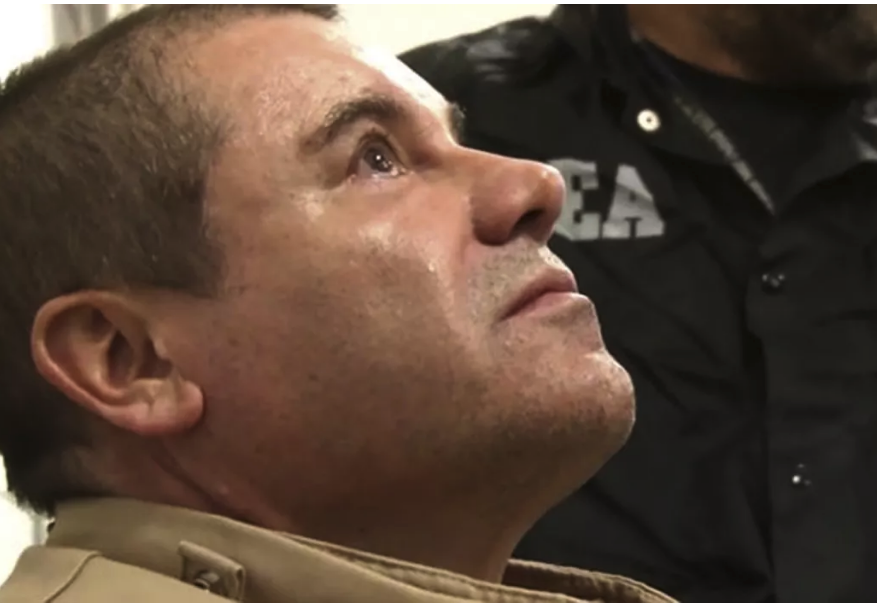
But contemporary research on women’s role in the drug trade is woefully lacking. I often wonder if this reflects a particular lens through which many of those documenting organized crime view the subject, both in academia and in the media. Most of them are men, and I wonder, do they pay more attention to the men in the room as a virtue of their own reporting biases? When they don’t ask about women and their role in the drug trade, it suggests they’re assuming that role is minimal. Through this lens, drug traffickers are, by definition, male. Pablo Escobar. El Chapo. John Gotti. Al Capone.
As I researched Guadalupe’s life and the court case that ended with her prison sentence, I found that the role she played certainly bore a resemblance more to what are traditionally male decision-making roles in the drug trade, rather than to the role played by women like Chapo’s wife Emma Coronel Aispuro. The lack of media attention on her and her criminal life didn’t reflect her lack of importance or power within the Sinaloa cartel, but instead her failure to fulfill the gender stereotypes at work in the drug trade. By the time she was detained, she was in her late 50s, and she didn’t tick the “babe” or “victim” boxes that the spotlight seems to demand from women in the business.
It’s true that Guadalupe may have started out as a victim. I learned about her five children and the husband who fathered them, a man who is referred to as abusive in court documents. According to her criminal lawyer, Ruben Oliva: “Over the course of her life she has had the great misfortune of ... crossing paths with men who have only seen her as a means to an end.”
But by the time I began reading about her, she had already served nearly 10 years in an American prison after being convicted in California for drug dealing back in the late 1990s. The case I was researching wasn’t her first rodeo — she knew what she was doing when she got involved with the Sinaloans.
As I researched women in the drug trade, it became increasingly obvious that there were many women involved who, like Guadalupe, did not fit the accepted tropes. High-ranking, powerful and sometimes violent women in drug organizations were not a novelty or an exception.
El Chapo’s Sinaloa cartel, born out of the Guadalajara cartel in the late 1980s, started out moving cocaine up from producers in Colombia, Bolivia and Peru to Mexico and over the border into the United States, alongside tons of weed and heroin. Nowadays these drugs have been joined by large quantities of methamphetamine and fentanyl. The Sinaloans defined the modus operandi for the proliferation of trafficking groups that thrive today: clandestine landing strips in the jungle that accommodate small planes packed to the roof with product; speedboats filled with dope ripping up the seas; drugs disguised as other goods concealed in container trucks and cars. El Chapo famously attempted to ship half a million dollars’ worth of cocaine into the United States from Mexico packed in jalapeño cans.
The drug trafficking world and its culture has been documented and portrayed as viscerally male and patriarchal. The ostentatious use of brutal violence has become a defining feature of Mexico’s crime wars, as has the sexual objectification of women by elements of narco culture such as narcoccorido (a genre of ballads and songs dedicated to drug lords) and plastic surgery. Women are accessories, another sign of male success, much like the collections of exotic and expensive animals narcos are famous for accruing. Emma Coronel Aispuro, Chapo’s wife, has come to exemplify an aspirational lifestyle and a “look” for women involved with drug traffickers in Culiacán, who are known as buchonas.
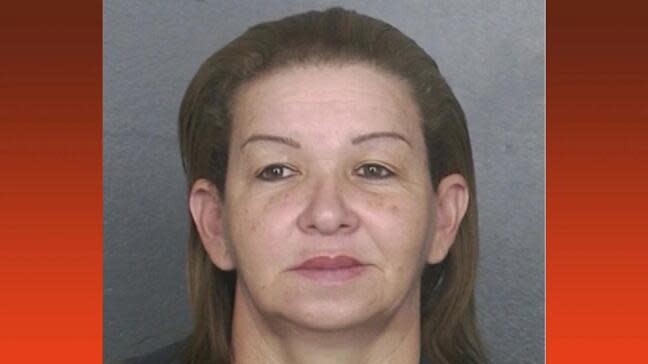
The macho nature of the drug trade and its surrounding culture also serves to hide women from view. In Honduras, the violent Valle family drug trafficking organization was for years controlled in part by one of my book's protagonists, Digna Valle. A former local government official in Honduras told me that Digna’s brothers, who worked alongside her, tried to hide her power for fear it would make them seem weak in the context of a male-dominated culture.
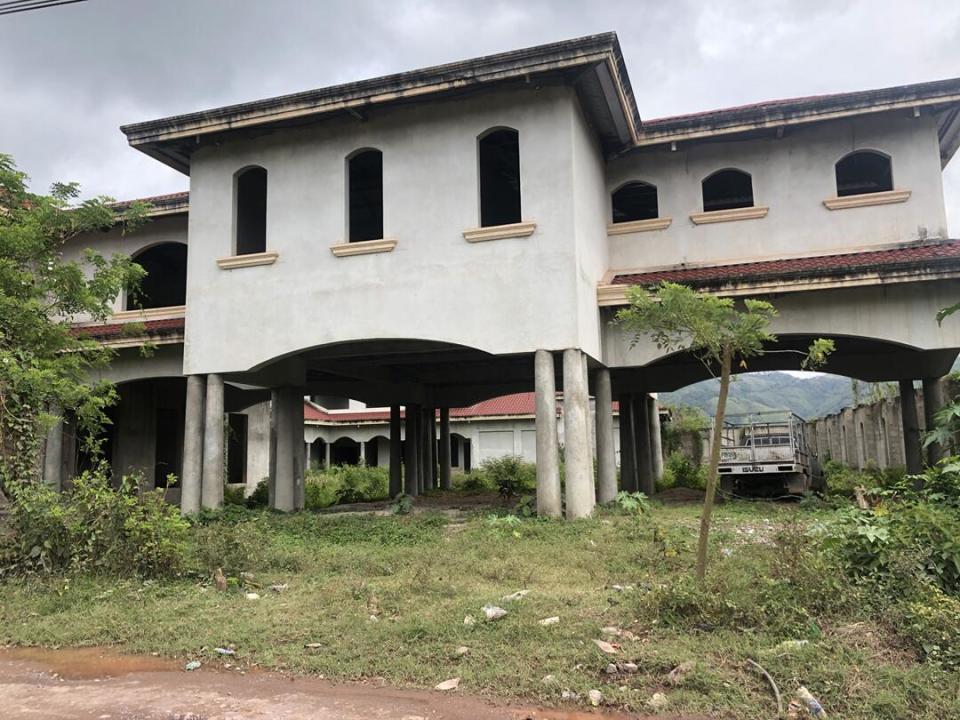
“Really, for the Valles, the people at the front were Arnulfo Valle and Luis Valle [Digna’s younger brothers], but they made sure Digna Valle never appeared to be a major protagonist in media coverage here. Later it was shown that it was she who managed their finances and was the brain behind a lot of their operations,” said the official, whom I spoke to in Santa Rosa de Copán. The small city is close to Honduras’ border with Guatemala, which makes up a major part of the cocaine smuggling route from south to north and the Valles' former domain.
"Digna's brothers [Arnulfo and Luis] were dedicated to sowing fear and terror here in this region, and in this northern region in general," said the former official. "It was only when [Digna] was captured and taken to the United States that it started to come out how powerful she had been within the organization."
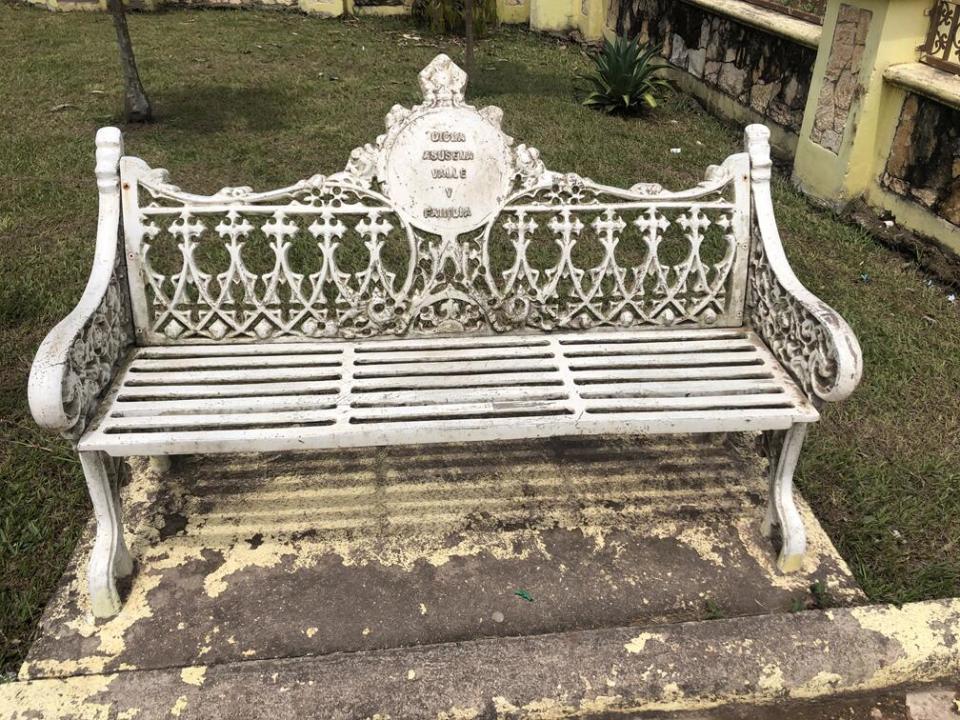
Some argue that there is a fundamental difference between how men and women behave in the crime business. “There’s not going to be a show and a gunfight — [women] don’t need to make a show of it like [male] cartel leaders have done in the past,” criminologist Mónica Ramírez Cano told me. Cano has interviewed dozens of notorious figures from Mexico’s criminal underworld, both male and female. She profiled El Chapo after his final capture in Mexico and before he was extradited to the United States.
But some criminal lawyers who have defended female drug bosses in the U.S. told me that women crave fame and power in the drug world as much as men do.
I have found that both claims are true.
Guadalupe’s relatively light sentence means that she is due to be released from prison about a year from now. But she’s unlikely to want to go home. Her former captain, El Chapo’s son Jesús, a.k.a. Alfredillo, remains at large south of the border. Alongside the Guzmáns, there are six other men named in the indictment who are no doubt displeased by her cooperation with U.S. prosecutors. One of them, Ismael “El Mayo” Zambada, co-founder of the Sinaloa cartel and a legendary Mexican trafficker, has never set foot in a jail cell and is one of the most-wanted criminals on the Drug Enforcement Administration radar.
Guadalupe has already said too much. If she manages to avoid deportation — which is usually the next step authorities take against foreign drug offenders like her — and remains in the U.S. after she leaves prison, she will have to spend the rest of her life looking over her shoulder. She will have to blend in and become invisible to survive.
I’m fascinated by Guadalupe and all of the other women featured in my book. As a journalist and writer, I do my best to tread the fine line between describing their exploits and the complexities of their stories without celebrating their criminal achievements. As a woman surrounded mostly by men investigating organized crime, I’m used to seeing women either underestimated or ignored. Overlooking women is a mistake, and these women’s stories prove that.
This is a lightly edited excerpt from the book "Narcas: The Secret Rise of Women in Latin America's Cartels" by Deborah Bonello. Bonello, a journalist, writer, editor and researcher who is Latin America editorial director for VICE News, has covered organized crime and criminal syndicates, particularly drug trafficking, for nearly two decades. She has worked as a freelancer for the Los Angeles Times based in Mexico City, where she was a special correspondent, as well as for the BBC, the Guardian and the Telegraph.
This story originally appeared in Los Angeles Times.

